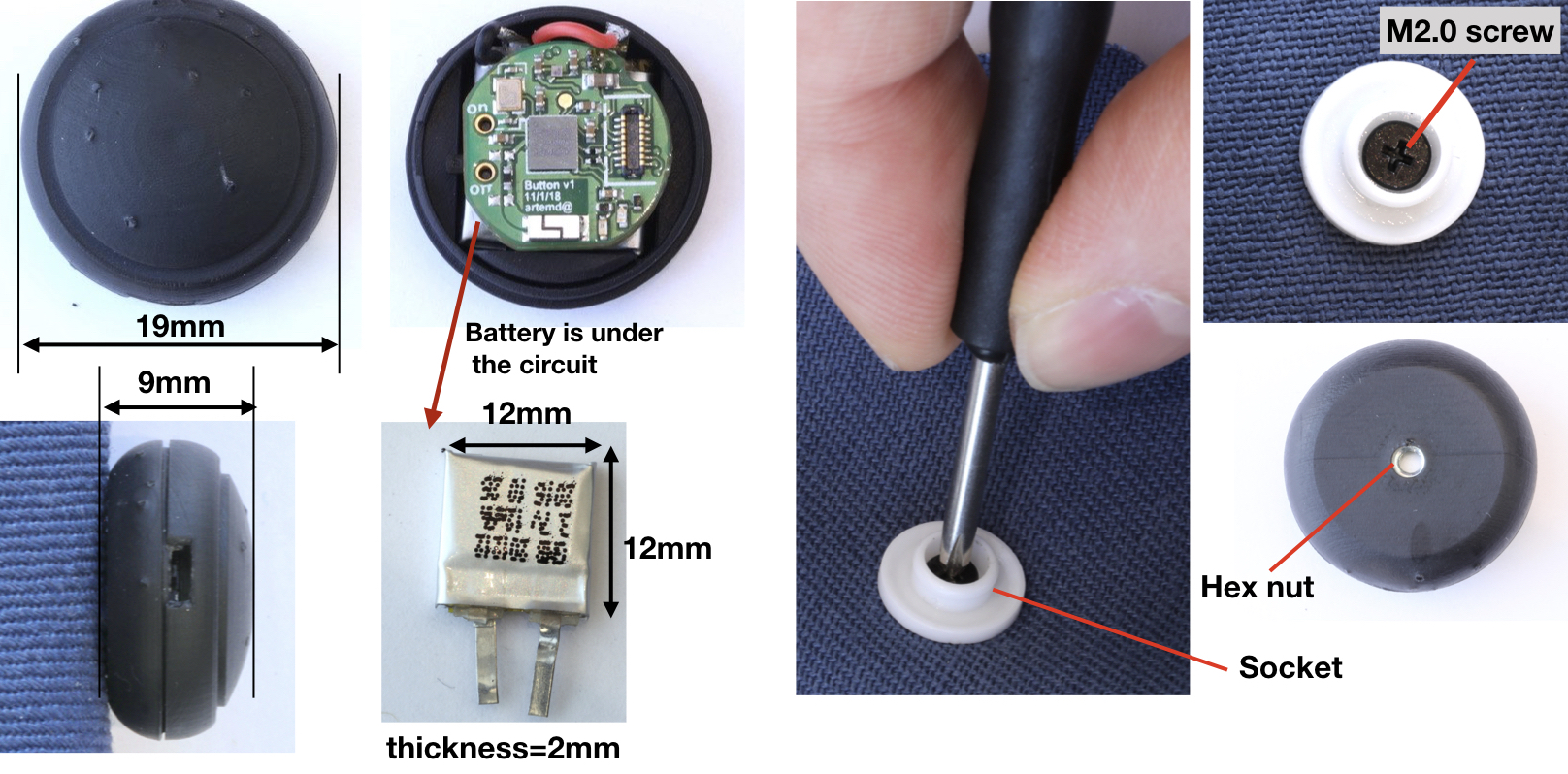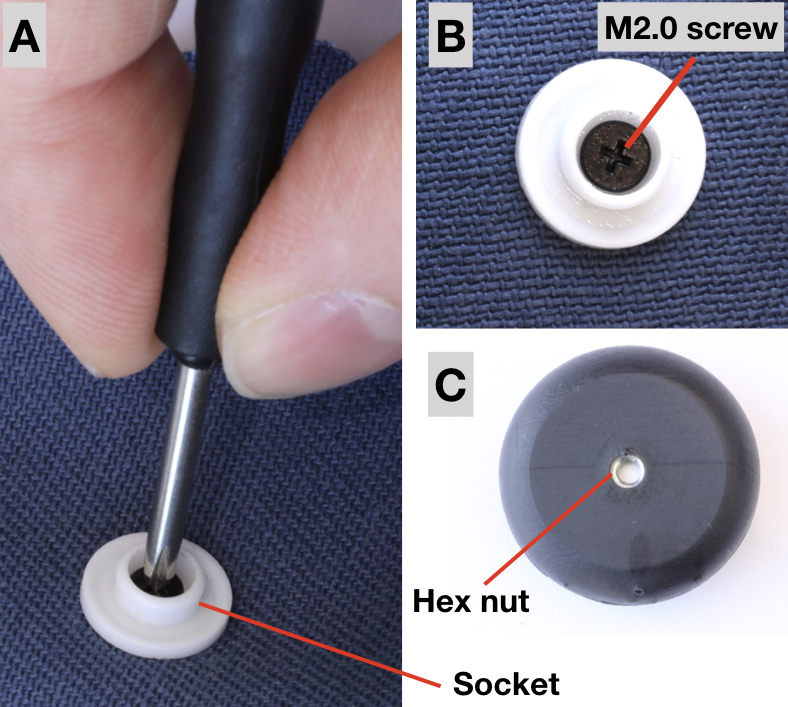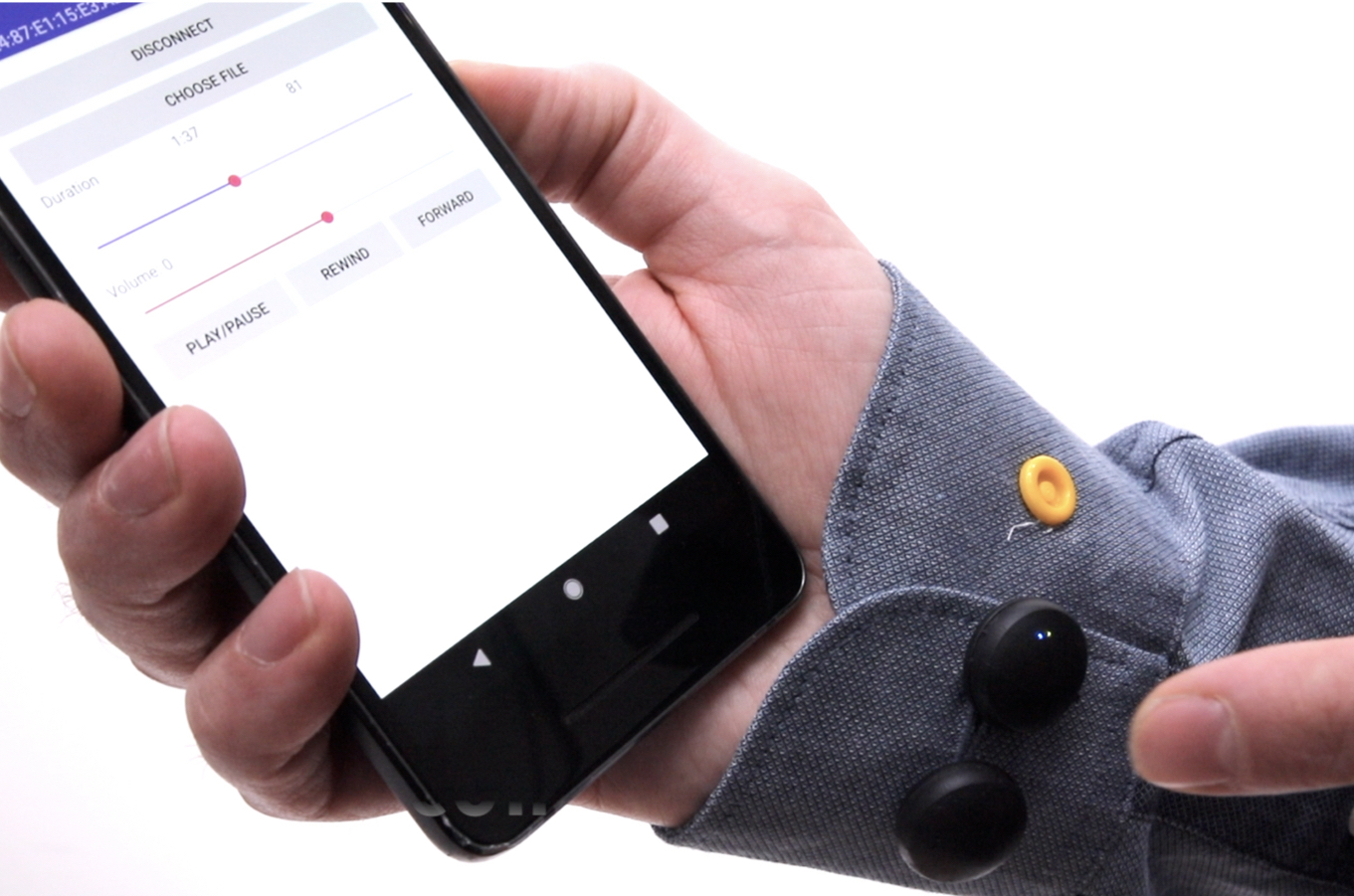SensorSnaps
Integrating Wireless Sensor Nodes into Fabric Snap Fasteners for Textile Interfaces
Artem Dementyev, MIT Media Lab
Tomas Vega, MIT Media Lab
Alex Olwal, Google Inc.
Idea
SensorSnaps are low-power wireless sensor nodes that seamlessly integrate into caps of fabric snap fasteners. SensorSnaps provide a new technique to quickly and intuitively augment any location on the clothing with sensing capabilities. SensorSnaps securely attach and detach from ubiquitous commercial snap fasteners. Using inertial measurement units, the SensorSnaps detect tap and rotation gestures, as well as track body motion.

Details in UIST paper below
SensorSnaps: Integrating Wireless Sensor Nodes into Fabric Snap Fasteners for Textile Interfaces. Proc of UIST'19
See the video here:
Bluetooth sensor nodes
We designed a custom 4-layer PCB to minituarize the design. We use a powerful nRF52832 chip as the microcontroller and Bluetooth tranceiver. To improve the power consumption and data rate, we use the uVision IDE from ARM. Alterntively, Arduino could be used on the microcontroller.
Mechanical enclosure
The enclosure was printed using Form 2 SLA printer. We used SLA, as the feature size were too small for an FDM printer.
Attachment to fabric
SensorSnaps are attached to the off-the-shelf snaps with a screw. This allows for a quick and removable connection. We tested with the innexpensive plastic snaps kit, found on Amazon, such as this one.
Applications
We present applications in which the SensorSnaps are used as gestural interfaces for a music player controller, cursor control, and motion tracking suit.
Music player
As a basic functionality, SensorSnaps can replace snap fastener caps on off-the-shelf clothing. We replaced cufflinks on a dress shirt with SensorSnaps. The SensorSnap was connected to a music controller Android app running on a mobile phone (Google Pixel 2) through Bluetooth. The app permitted choosing an audio file (i.e., song, podcast, audiobook), and using the tap gesture to either play or pause the audio file. The rotation gesture allowed to change the volume of the audio being played. Direction of rotation increased or decreased the volume level. The angle controlled the magnitude of the volume change. Double-tapping allowed to change between volume and time modes. In the time mode, the rotation gesture is reused for either fast-forwarding or rewinding of the audio. Direction of rotation triggers fastforward or rewind. The angle of the rotation controlled the speed of the fast-forwarding or rewinding.
